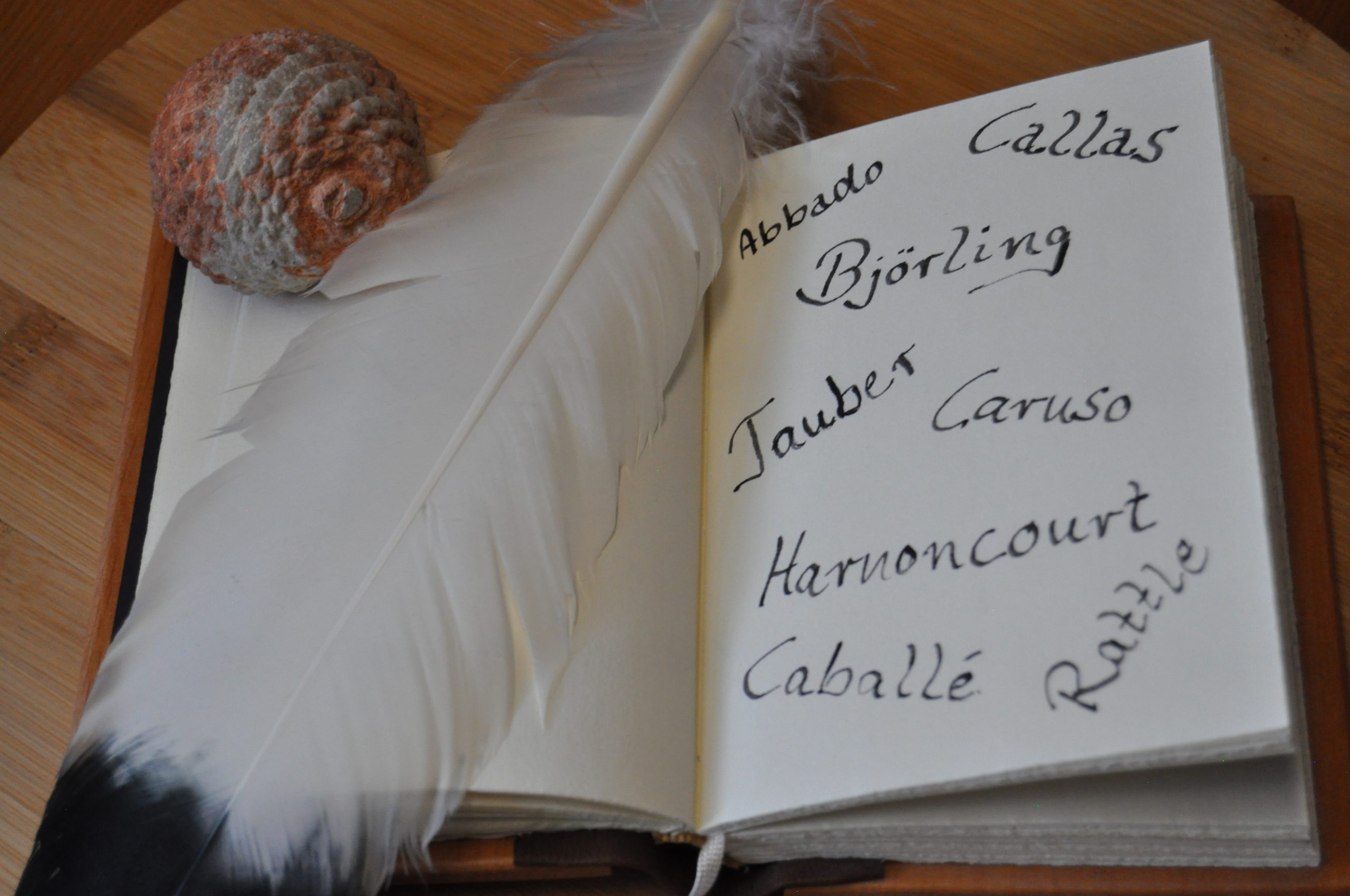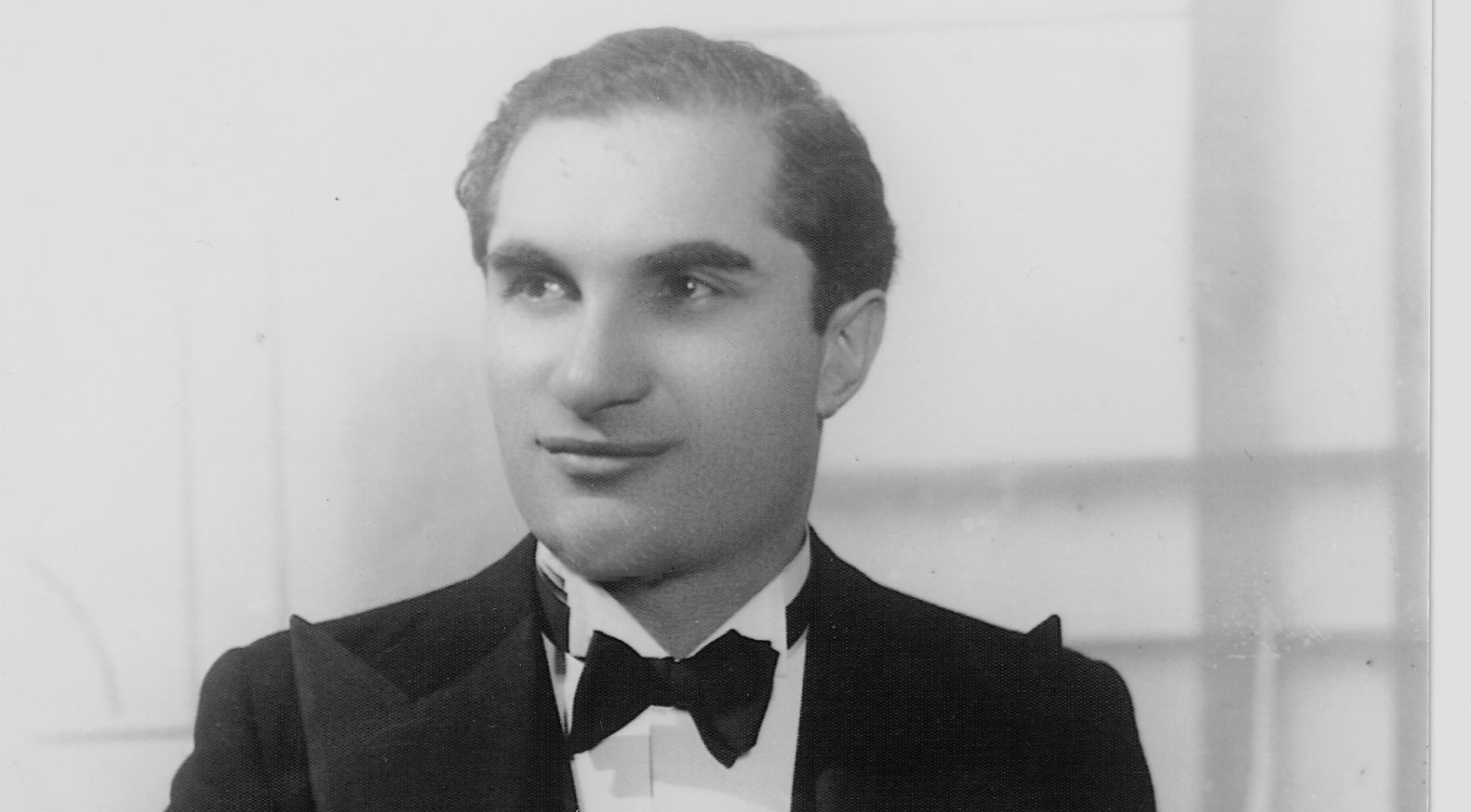At a time when all the top-class tenors had left Germany, he was one of the few remaining singers in the thirties and forties who continued to practise their profession in Germany. Tenors like Richard Tauber or Joseph Schmidt were forced to leave their artistic home.
Peter Anders grew up in a time marked by numerous privations: in Berlin he experienced the age of the Roaring Twenties, but the subsequent hyperinflation had a strong impact on the tenor’s early life. Even at a very young age, Anders is said to have known that he wanted to become a famous singer one day – but his parents initially demanded a solid education that had nothing to do with the arts. Considering the circumstances of the time, a reasonable decision – Peter Anders complied with his family’s wishes, but without ever losing sight of his true goal.
Accountant – that was not enough for Anders
With the money Peter Anders earned from his work as an accountant, he was able to finance his training as a singer at the very renowned Berlin Academy of Music.
Anders later expressed his dissatisfaction with his profession as follows: “I was less and less satisfied with the profession determined by my father, because I was always a person who wanted to live life to the fullest and I had nothing in mind with dead numbers and letters, at least as I perceived them.”
For the young Peter Anders it was clear that only a career as a tenor would make him truly happy in life. Anders initially completed his training as a singer in parallel to his job as an accountant: “What it means for a vibrant young man to study singing night after night after eight hours in the office is something a layman can’t even fathom!” said Peter Anders later, looking back on this time. Last but not least, vocal training did not guarantee that a later career as a tenor would be successful.
In addition to his training at the Berlin Academy of Music, he received singing lessons from the well-known contralto Lula Mysz-Gmeiner, whose daughter later became his wife.
However, as it would soon turn out, Peter Anders was in fact a lyric tenor and mastered much more than just the comic fach as a singer.
A buffo tenor – or a lyric tenor?
Early on in his training it was agreed that his voice belonged in the buffo department – that is, in the comic opera department. When Peter Anders took up his first professional engagement as an opera singer at the Heidelberg Opera in September 1932, he was signed for the buffo department – his following engagement at the much larger Hessisches Landestheater in Darmstadt from August 1933 included “buffo and operetta parts” according to his contract.
Even the most critical voices in the musical landscape of the time agreed that Peter Anders’ voice was “beautiful and lyrical” – in view of the fact that Anders mainly sang buffo parts, it was surprising that the adjective “lyrical” was used to describe Peter Anders’ voice. However, as it would soon turn out, Peter Anders was in fact a lyric tenor and mastered much more than just the comic fach as a singer.
In Darmstadt, Peter Anders sang the role of Tamino from The Magic Flute (Mozart) for the first time on 9 February 1934: He had already shone in Heidelberg in the role of Pedrillo from Mozart’s Abduction from the Seraglio.
It was not long before the medium of radio also took notice of Peter Anders: thus, parallel to his stage engagements, Anders regularly went to Berlin to make recordings.
From August 1935 to July 1937, Peter Anders was engaged by the Städtische Bühnen Hannover – this time it was stipulated in his contract that he was to perform mainly lyric tenor roles. In the meantime, artistic directors were also aware that Peter Anders’ voice was a lyric tenor voice.
In Hanover, Peter Anders’ repertoire expanded decisively: among other roles, he celebrated his debut in the role of Alfred from Verdi’s Traviata.
Since there were not too many accomplished opera tenors in Germany at the time, the demand for a tenor of Peter Anders’ calibre was correspondingly high.
Tenors – scarce commodity
Because Peter Anders regularly travelled to Berlin for recordings and also made his debut there in January 1937 at the Oper unter den Linden in the role of Tamino, the tenor always remained in touch with the zeitgeist. Although the political circumstances of his time did not bypass Peter Anders, he focussed mainly on his profession as an opera tenor. Since there were not too many accomplished opera tenors in Germany at the time, the demand for a tenor of Peter Anders’ calibre was correspondingly high. This demand was reflected in particular in the form of above-average fees – at the end of the 1930s, at the age of just 28, Peter Anders was able to concentrate entirely on his artistic activities and lived a life free of material restrictions.
Heinz Tietjen, general director of the Prussian State Theatres in Berlin and a promoter of Herbert von Karajan‘s career, had meanwhile also taken notice of the tenor Peter Anders: Tietjen sought a guest performance contract with the tenor. In the meantime, Peter Anders was in demand as a tenor throughout Germany: he regularly travelled across the country to pursue his activities as an opera singer.
The Mozart Tenor
From 1940, Peter Anders was engaged at the Berlin State Opera: But this by no means meant for Anders that he would only perform in Berlin. The tenor made his first appearance at the Vienna State Opera on 7 March 1940. Reading all this, one might get the impression that Anders performed exclusively in large opera houses in major European cities. But even at the height of his career, the tenor did not shy away from accepting engagements on provincial stages.
The performance at the Salzburg Festival in 1941 was the artistic highlight of Peter Anders’ career until then. In the Mozart Year 1941, everything revolved around the composer Wolfgang Amadeus Mozart – Anders was able to establish himself as the Mozart tenor par excellence with his role of Tamino.
In the meantime, Peter Anders intensified his activities for radio and vinyl record – it is thanks to these activities that many recordings of Anders’ vocal art exist today. At that time, however, people did not pay too much attention to vinyl recordings: the technology was still in its infancy and playing the vinyl records was extremely costly and material-intensive. The real value of the recordings only became apparent much later, when the tenor’s legacy had to be preserved.
Finding a harmony as a singer between the two genres of lieder and opera was anything but easy.
The heroic tenor Peter Anders
The destruction of the Berlin State Opera in 1941 did nothing to dampen Anders’ artistic career – the opera was rebuilt within a record-breaking one and a half years and performances were continued shortly afterwards. The last years of the Second World War, however, offered anything but an ideal climate for an opera singer: if opera houses were still performing at all, it was only under difficult conditions.
After the end of the Second World War, it initially took some time for Peter Anders’ career to pick up again: In the early fifties, Peter Anders was able to establish himself as a heroic tenor in addition to his status as a lyric tenor. This happened through Anders’ interpretation of the role of Othello, which the tenor performed for the first time on 18 May 1950 at the Hamburg State Opera. Peter Anders had become a member of the Hamburg State Opera two years earlier. Peter Anders gained international renown, among other things, through his participation in the 1950 Edinburgh Festival in the role of Bacchus in Ariadne auf Naxos (R. Strauss).
In the meantime, the tenor had also established himself as a sought-after Lieder singer: Finding a harmony as a singer between the two genres of lieder and opera was anything but easy.
A unique voice
In the fifties, Peter Anders did not limit himself to a single opera house: he not only travelled all over Germany for his engagements, he was also in demand on a European level. Stations of his artistic activity in the fifties included Paris, Vienna and Zurich.
Peter Anders’ activity on European stages did not go unnoticed overseas either: the Metropolitan Opera in New York was interested in engaging the tenor Peter Anders for a production. Peter Anders could interpret buffo roles just as well as roles of a lyric tenor or a heroic tenor: It was precisely this fact that attracted those responsible in the USA to a tenor like Anders.
But an overseas engagement of Peter Anders was never to come…
The last premiere of his life was the Hamburg production of the opera André Chenier (Giordano) in 1954. On 5 September 1954, Peter Anders crashed his car and succumbed to his injuries five days later. He was only 46 years old.
The legacy of Peter Anders continues to fascinate opera enthusiasts, as well as those who have had little exposure to opera to this day: The brilliance of Peter Anders’ voice and the breadth of his repertoire, which he constantly expanded, are unmatched. Anders’ early death prevented him from ever gaining a foothold on the international opera stage – there is no question that he would have had a lasting impact on the international opera world.
Cover picture: © Simon von Ludwig
Main source: Kösters, Ferdinand: Peter Anders – Biographie eines Tenors [Biography of a Tenor], 1995 J.B. Metzler

 Deutsch
Deutsch





